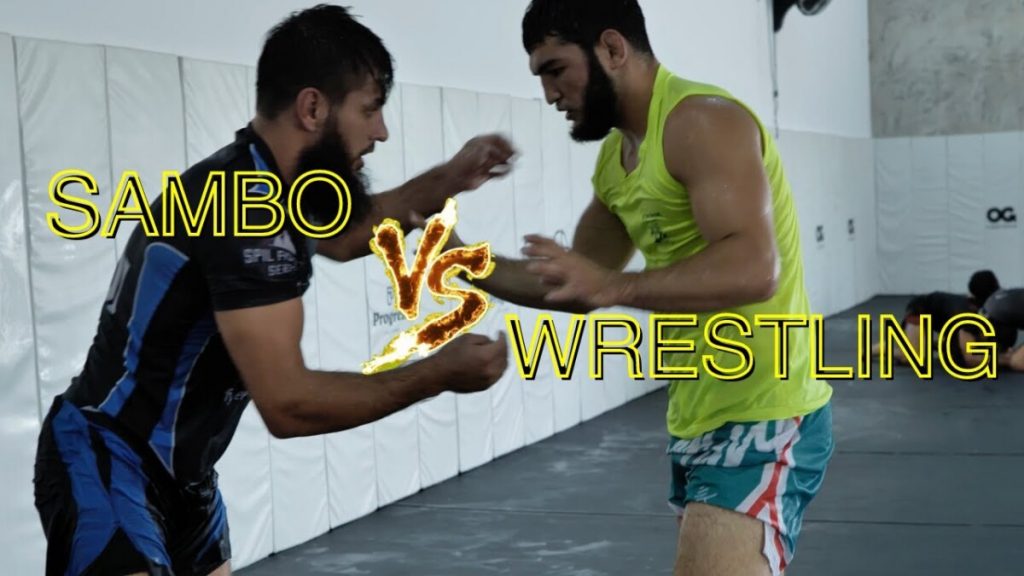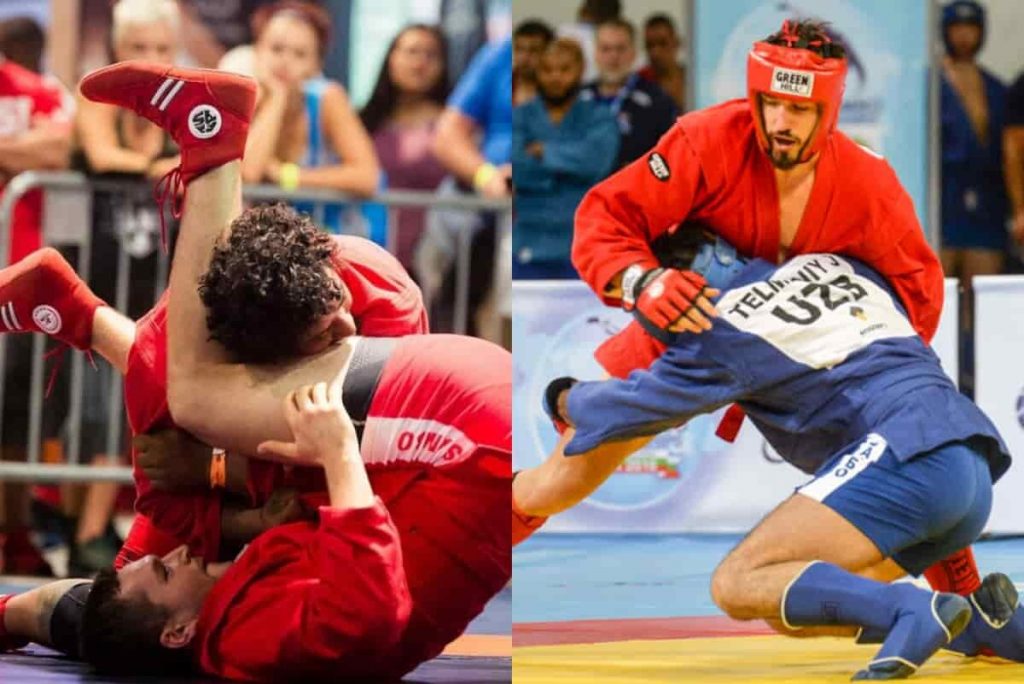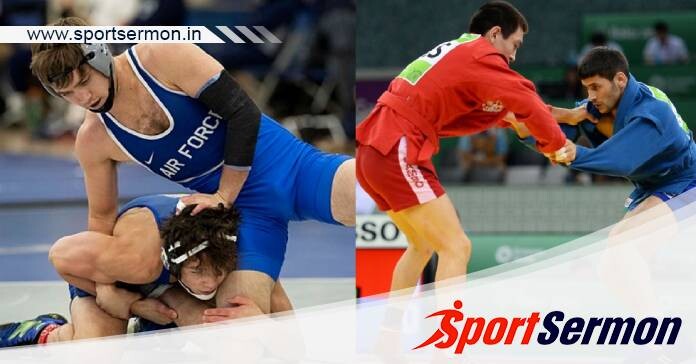Sambo Vs. Wrestling: Having existed for thousands of years, wrestling is among the world’s oldest combat disciplines. One of the more recent martial arts is sambo, which was created for hand-to-hand fighting by the Soviet Union military in the 20th century. It is a mixed martial art that permits the use of striking, grappling, and full-contact submissions.
As two of the most solid foundations for mixed martial arts, these two martial disciplines have arisen. After Brazilian Jiu-Jitsu fighters dominated the early days of the sport, wrestlers were next in line. However, Sambo fighters like Fedor Emelianenko finally emerged and demonstrated the effectiveness of the fighting technique to a global audience.
Combat and sport are the two primary subtypes of Sambo. While blows are prohibited in Sport Sambo, contestants are permitted to combine grappling techniques from different martial arts, such as Judo, Wrestling, and Jiu-Jitsu. Combat Sambo resembles mixed martial arts quite a bit. Strikes and grappling tactics are permitted in this format. Before switching to mixed martial arts, many mixed martial artists with Sambo backgrounds participated in combat Sambo.
There is no combat variant of wrestling; it is purely a grappling sport. Pinting your opponent to the mat is the aim of a competition; strikes and submissions are not permitted.
Sambo Vs. Wrestling: Recognising The Distinctions And Parallels Between Both

To better grasp the parallels and distinctions between these two sports, let’s examine Sambo Vs. Wrestling in more detail:
Sambo
The Soviet Union developed Sambo in the 1930s as a hand-to-hand combat method for Red Army soldiers. The abbreviation “Sambo” is a translation of “SAMozashchita Bez Oruzhiya” from Russian. In English, it means “self-defence without weapons.”
The Soviet Union assigned Vasili Oshchepkov and Viktor Spiridonov to compile potent moves from different martial arts throughout the world and apply them to a new combat system.
The Russian fighting system was built around judo, with other martial arts like catch wrestling and jiu-jitsu serving as its limbs. Sambo is a modern sport that shares many similarities with classical Judo, including throws and trips. Sambo permits takedowns that include leg attacks, such as the single and double leg takedown, in contrast to Judo.
Combat Sambo was only available to the Russian military and a few law enforcement organisations until the 1980s when the public was allowed to use it. Combat Sambo’s striking element is less constrictive than MMA’s. Headbutts and groyne blows are among the acceptable techniques.
Fedor Emelianenko’s accomplishments as a mixed martial artist have increased Sambo’s appeal. Fighters that followed in his footsteps, including Khabib Nurmagomedov, elevated the sport even higher in the public eye.
You might also be interested in reading this: Ranking the Top 5 All-Time Greatest Wrestling Commentators
Wrestling
As one of the world’s first forms of warfare, wrestling is practised in most civilizations. Records of wrestling matches with competition date back to 3000 BC. It was one of the most watched events of the Summer Games when it was first added to the ancient Olympic Games by the Greeks. Wrestling has influenced several martial arts, including Judo and Sambo. In these sports, the object is to pin the opposition to the ground.
Greco-Roman and Freestyle wrestling are the two primary styles that are practised nowadays. Greco-Roman wrestling is a highly regulated style of wrestling where leg attacks on an opponent are not permitted. Less restrictions apply to freestyle wrestling, which makes a wider variety of takedowns and holds possible, including leg attacks.
Catch-for-catch wrestling, a mostly no-holds-barred style that permits the use of locks and submissions, is the ancestor of modern freestyle wrestling. Modern freestyle wrestling, which prohibited joint locks and submissions in the 1920s, was approved by the Olympics and went on to become the most widely used wrestling technique.
Main Differences

The two sports’ contrasting match scoring systems—wrestling and Sambo—are one of their key distinctions. Another noteworthy variation is the usage of joint lock submissions in Sambo competitions. It is forbidden to choke in sports.
Because it permits attacks from both standing and ground positions, Combat Sambo differs greatly from wrestling.
Rules
One five-minute round is usually all that sambo bouts have on an eight-meter mat. Points can be earned by participants through throws, holds, and submits. A well-executed throw in Sambo results in an automatic victory, much like in Judo. In addition, if one fighter gains an eight-point advantage over another during a battle, the winner is announced right away. At the conclusion of the allotted period, points are totalled to identify the winner if no one wins automatically.
The duration of a wrestling bout is split into two halves of three minutes each, separated by 30-second intervals. In a wrestling bout, the main objective is to keep your opponent on the mat for as long as possible, as this results in an automatic “fall” victory.
Gear
Wrestlers compete in one-piece uniforms called singlets. Referees will find it simpler to spot unintentional grabs when a contestant is wearing a singlet that fits snugly around their torso. Additionally, wrestlers compete while donning wrestling shoes, which improve their grip on the mat.
A kurtka, or jacket that resembles the upper portion of a judo Gi, is worn by sambo players. The kurtka may be seized and used to control and take down opponents, just as the Gi. Sambo fighters, however, don’t dress in typical Gi trousers. Rather, they don exceedingly snug compression shorts. Sambo fighters use wrestling-style shoes for both training and competition.

